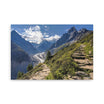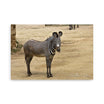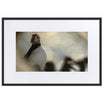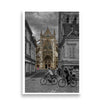Photography: An Art, A Passion, A Profession
Introduction
Photography, this wonderful fusion of art and technology, allows us to capture and preserve precious moments, share stories, and reveal unique perspectives. Whether you are an amateur, enthusiast, or professional, photography offers endless creative possibilities. This article explores the different facets of photography, its techniques, and how you can improve your skills to capture stunning images.
The Different Genres of Photography
1. Landscape Photography
Landscape photography captures the beauty of the natural world. It highlights vast expanses, majestic mountains, lush forests, and coastal scenes.
2. Portrait Photography
Portrait photography focuses on individuals, revealing their personality and emotions. It can be formal, informal or artistic.
3. Street Photography
Street photography captures scenes of everyday life in public spaces. It is spontaneous and often unposed, offering an authentic glimpse into urban life.
4. Fashion Photography
Fashion photography focuses on clothing and accessories, often for magazines, advertisements or brand campaigns. It is artistic and stylized.
5. Still Life Photography
Still life photography immortalizes inanimate objects, such as flowers, food, or everyday items, by playing with composition and light.
6. Sports Photography
Sports photography captures dynamic and energetic moments in sporting events. It requires technical skills to freeze the action in motion.
7. Animal Photography
Wildlife photography focuses on animals in their natural habitat. It requires patience and knowledge of animal behavior.
8. Wedding Photography
Wedding photography immortalizes the most important day of a couple's life, capturing moments of joy, emotion and celebration.
Essential Photography Techniques
1. Master the Exposure
Correct exposure is essential for a good photo. It depends on three main parameters: aperture, shutter speed and ISO sensitivity.
2. Composition
Composition is the process of arranging the elements of an image in an aesthetically pleasing way. Rules like the rule of thirds, leading lines, and natural frames can improve the visual quality of your photos.
3. Use of Light
Light is a key element in photography. Learn how to use natural light, play with shadows, and master artificial lighting to create spectacular effects.
4. Focus and Depth of Field
Mastering focus and depth of field allows you to control which parts of the image are sharp and which are blurry, adding dimension and interest to your photos.
5. Post-Processing
Post-processing enhances and corrects photos after they are taken. Software like Adobe Photoshop and Lightroom can be used to edit colors, brightness, and remove imperfections.
Photographic Equipment
1. Cameras
Cameras range from compacts to DSLRs to mirrorless cameras. Each type has its own pros and cons depending on your needs and skill level.
2. Objectives
Lenses greatly influence the quality and style of your photos. Prime lenses, telephoto lenses, wide-angle lenses, and macro lenses offer different perspectives.
3. Accessories
Tripods, filters, remote shutter releases and camera bags are essential accessories that make shooting easier and protect your gear.
4. Lighting
Artificial lighting, such as external flashes and studio lights, is crucial for controlling light in different shooting situations.
Improve Your Photography Skills
1. Practice Regularly
As with any skill, regular practice is the key to improvement. Get out there often to take pictures and try new subjects and techniques.
2. Study the Works of Famous Photographers
Analyze the works of great photographers to understand their techniques and style. This can inspire your own work and give you ideas.
3. Participate in Workshops and Courses
Join workshops, online classes, or photography clubs to learn new techniques and receive constructive criticism.
4. Experiment
Don't be afraid to experiment with your camera. Try different angles, perspectives, and settings to see what works best.
Photography and Social Networks
1. Photo Sharing
Social media platforms like Instagram, Flickr, and 500px are great platforms to share your photos and get feedback. Use relevant hashtags to reach a wider audience.
2. Build an Online Portfolio
Create an online portfolio to showcase your work. A professional website can attract potential clients and provide a showcase of your talent.
3. Engagement with the Community
Interact with other photographers online. Commenting and liking other people's photos can help build relationships and learn from the community.
Photography as a Profession
1. Start Your Own Business
If you are passionate about photography, you can make a career out of it. Create a business plan, build your portfolio, and start looking for clients.
2. Specialization
Specialize in a genre of photography that you are passionate about and excel at, whether it is wedding, commercial, or fine art photography.
3. Networking
Attend events, join photography associations, and network to meet potential clients and other industry professionals.
Conclusion
Photography is an art that offers endless possibilities to capture and share moments. Whether you are a beginner or a professional, there are always new techniques to learn and new horizons to explore. By practicing regularly, studying the work of other photographers and experimenting, you can improve your skills and create images that inspire and move.
FAQs
What is the rule of thirds in photography? The rule of thirds is a composition technique that divides the image into nine equal parts by drawing two horizontal lines and two vertical lines. Placing important elements along these lines or at their intersections makes the image more balanced and interesting.
Which camera is best for beginners? An entry-level DSLR or mirrorless camera is ideal for beginners. They offer more control over settings and better image quality than compact cameras.
How can I improve the sharpness of my photos? To improve sharpness, use a tripod to avoid camera shake, choose a fast shutter speed, and make sure your focus is accurate.
What are the best photo editing software? Adobe Lightroom and Photoshop are the most popular photo editing software. They offer powerful tools for adjusting colors, brightness, and retouching images.
How can I make photography my career? To make a career in photography, build a strong portfolio, specialize in a genre, and network with potential clients and other professionals. Also consider starting your own photography business.
What is the difference between a prime lens and a zoom lens? A prime lens has a fixed focal length, typically offering better image quality and a wider aperture. A zoom lens offers more flexibility by allowing you to change the focal length, but may sacrifice some image quality.




































































Leave a comment
All comments are moderated before being published.
This site is protected by hCaptcha and the hCaptcha Privacy Policy and Terms of Service apply.